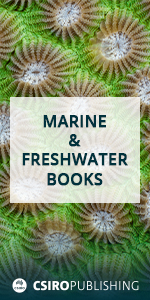Australian Journal of Zoology
Volume 66
Number 2 2018
Chinese alligators (Alligator sinensis) are an endemic and rare species in China. We performed RNA-Sequencing to compare the transcriptome of the Chinese alligator during hibernation and active periods in order to better understand the mechanisms underlying seasonal differences in activity level. Results indicate that some differentially expressed genes play a crucial role in a wide range of fundamental physiological processes in Chinese alligators. These data may provide valuable and useful resources for further studies of Chinese alligators.
Photo by Hongji Sun.
The iconic greater glider, Australia’s largest gliding possum, is predicted to decline with climate change. We report on a decline that is already occurring in the Blue Mountains and assess the factors responsible. The most likely cause, direct and indirect, is a marked increase in local temperature in the last 20 years. The heat-sensitive and fire-sensitive greater glider, once widespread, is becoming restricted to higher elevations, a trend likely to be repeated throughout its distribution with increasing climate change.
Photo by Peter Smith.
Western Australia is home to unique blind cavefish, but it is unclear precisely how many species there are, thus hampering conservation efforts. This study used a wide range of genetic data and specimens to clarify the number of species, and found there was one from the Cape Range and one from Barrow Island. This has implications for future research in the linked fields of biogeography and conservation.
Photo by Douglas Elford.
Large stranded marine animals such as whales and turtles provide tonnes of food to K’gari (Fraser Island) scavengers including dingoes, altering behaviour and increasing scavenger populations which may produce flow on effects for terrestrial ecosystems.
Photo by Queensland Parks and Wildlife Service.
This is the first detailed survey of nocturnal birds in Tasmania’s forests. The threatened masked owl and owlet nightjar were found mostly in lowland mature dry eucalypt forest, probably because of their nesting and foraging requirements. The southern boobook preferred the wetter lowland eucalypt forest. A network of mature dry and wet lowland forest is required for the conservation of these nocturnal birds, particularly the threatened Tasmanian masked owl.
Photo by Michael Todd.
Australia has many highly localised reptiles. We typically know little about these species, thus hindering conservation. We used targeted field surveys, species distribution modelling and genetics to resolve the distribution and population genetic structure of two such species. Our approach was effective for finding new populations and uncovering divergent lineages, and we cover the management implications.
Photo by Lorenzo Bertola.
 , Xianbo Zuo, Long Sun, Peng Yan, Fang Zhang, Hui Xue, En Li, Yongkang Zhou, Rong Wu and Xiaobing Wu
, Xianbo Zuo, Long Sun, Peng Yan, Fang Zhang, Hui Xue, En Li, Yongkang Zhou, Rong Wu and Xiaobing Wu










